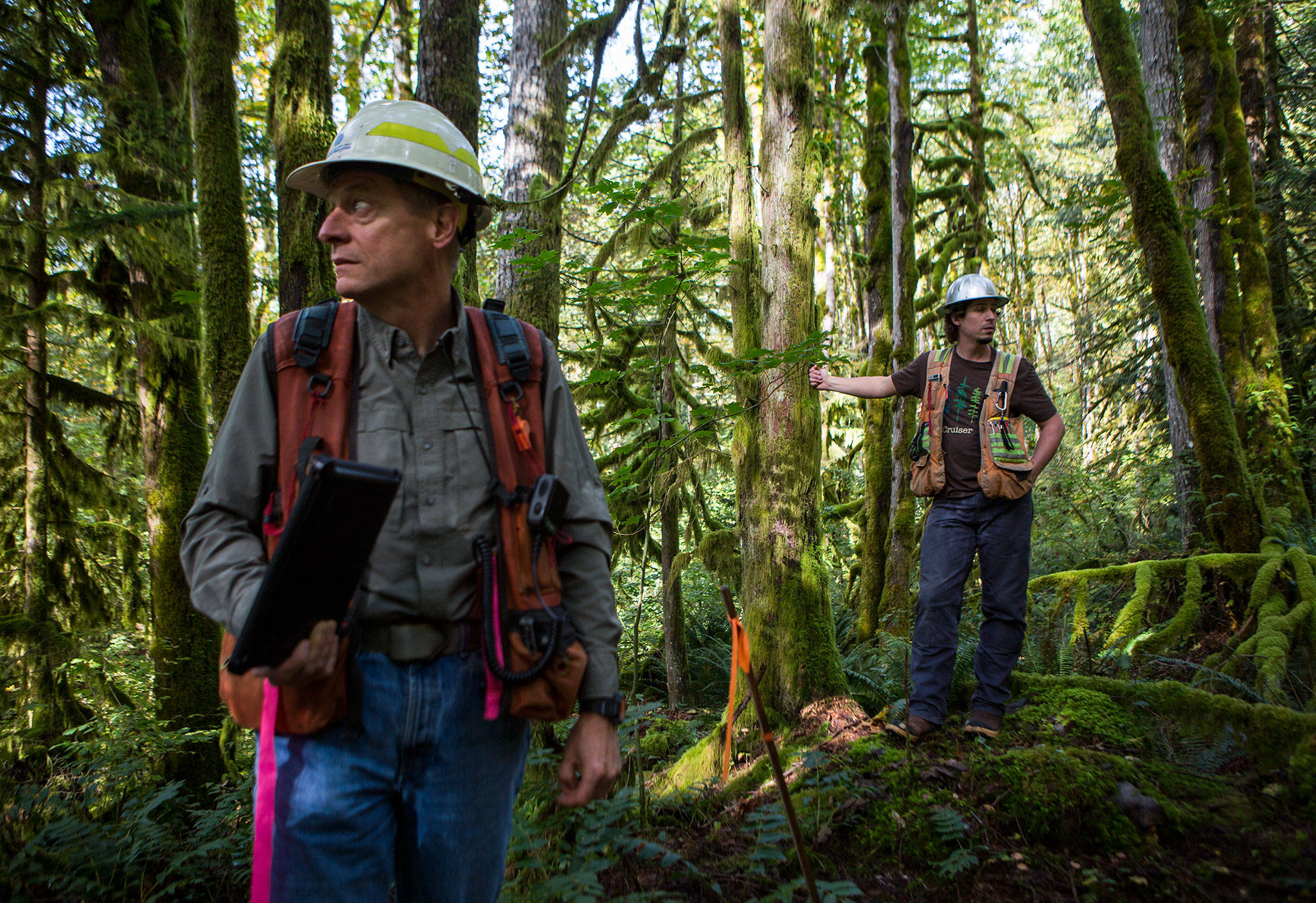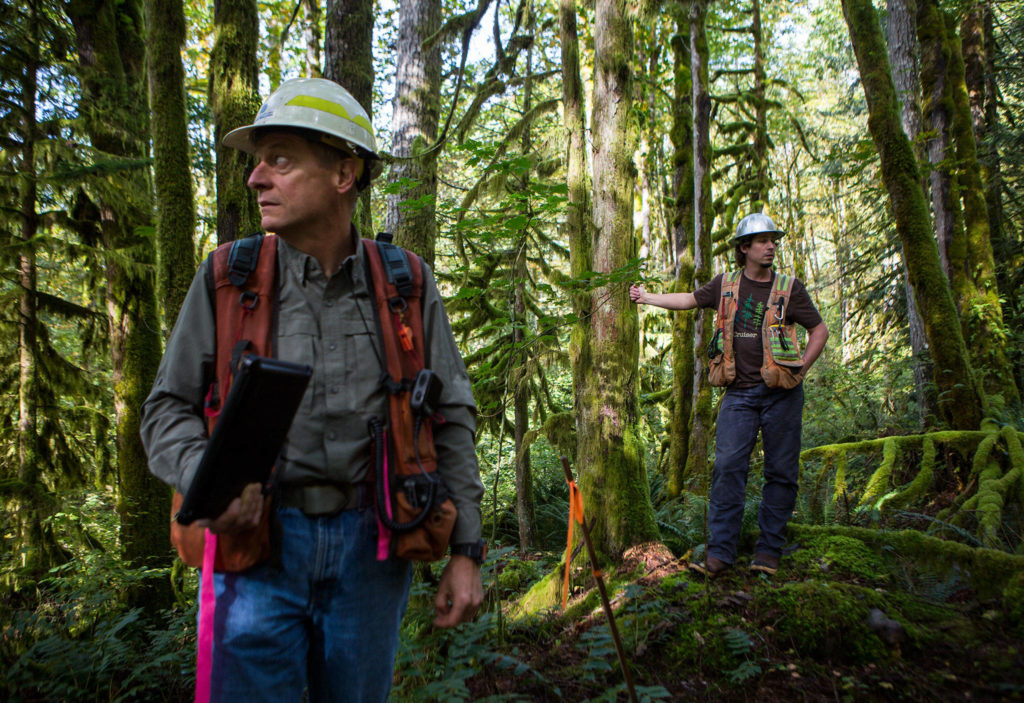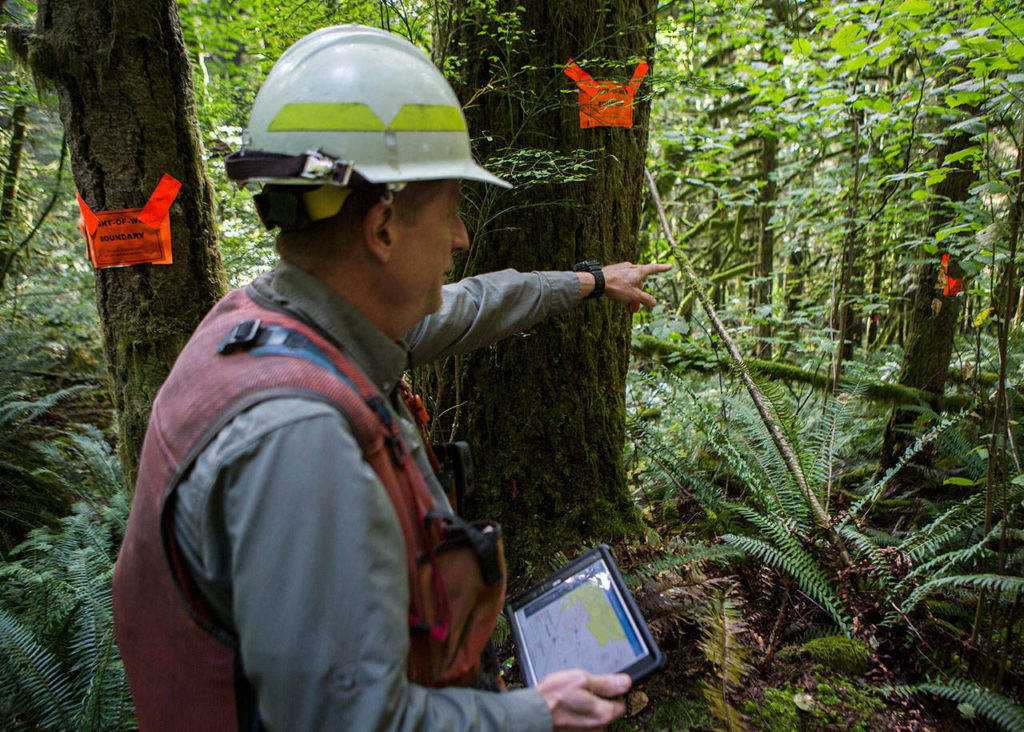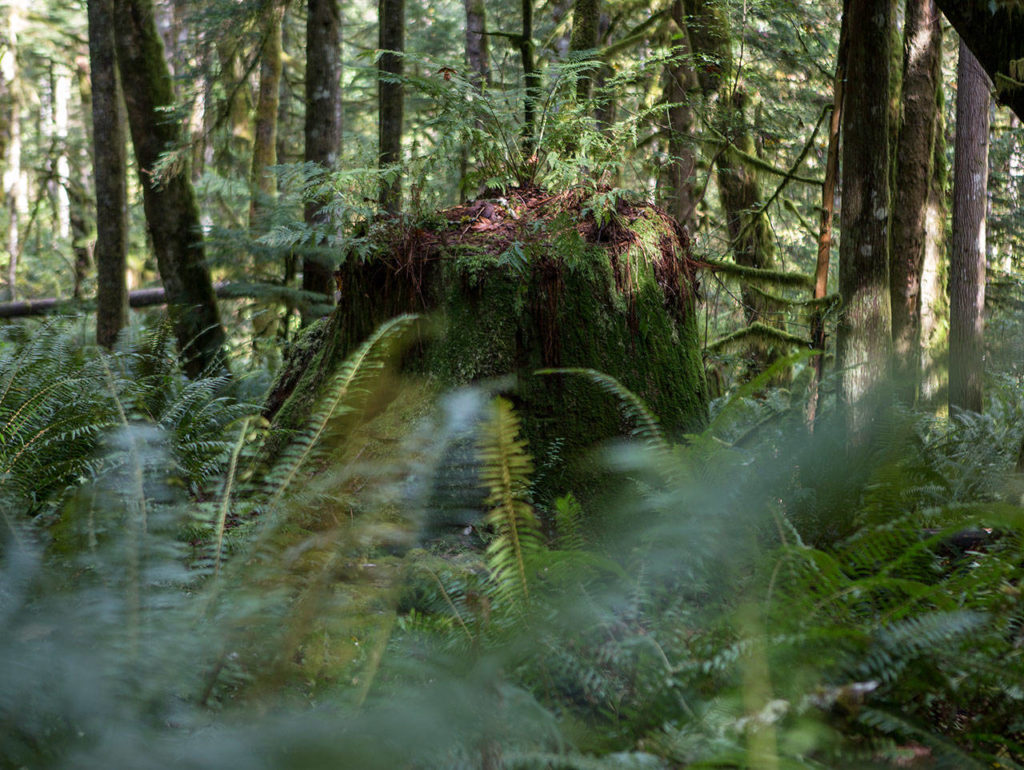GOLD BAR — Trees could be felled within the year after the Snohomish County Council passed a resolution Wednesday supporting the Middle May timber harvest.
For a decade the Washington State Department of Natural Resources has sought to harvest about 170 wooded acres. Part of the state agency’s responsibility is management of timber for sale. Profits are doled out to nearby junior taxing districts and to build schools.
In this case, timber funds would go to the Sultan School District, library and other local governments.
What used to be known as the Singletary harvest, DNR has rebranded as the Middle May timber sale, after nearby May Creek.
The state is in the final stages of planning for the sale, said Kenny Ocker, a spokesman for the Department of Natural Resources Forest Resources Division.
“It’s still on track to be presented to the Board of Natural Resources in April and then auctioned in May,” he said.
But the sale has drawn divisions between governments and residents over environmental, financial and recreational concerns.
The Snohomish County Council passed the resolution, 3-2, supporting the sale’s progress as soon as possible. Councilmembers Megan Dunn and Stephanie Wright opposed it.
Dunn said the sale was a one-time gain at the expense of natural resources. She cited a City of Gold Bar resolution, calling the proposed logging detrimental to the area’s natural beauty and outdoors recreation economy.
Timber, while not the leading industry it was in the state’s early years, is still a productive industry.
Snohomish County had 11.6 million board feet harvested, with a stumpage value of almost $5.9 million, in the second quarter of 2019, according to Washington State Department of Revenue data.
The county received more than $1.7 million in forest excise tax from the state through November in 2018.
State-owned timber land is a prized commodity with more than 175,000 acres locked out of harvest as the Department of Natural Resources works on a conservation plan for a threatened bird species.
Before the resolution’s vote, several people spoke out against the harvest. They said they worried about the noise of saws, impact to trails and the hit to outdoors recreation money. One speaker said his view, and thus his property value, would decline because of the harvest, and blamed the sale on “some people unfortunately clinging to the forestry past of the state.”
Councilmember Sam Low, whose district covers that area, put forth the resolution. He said this has been a long process that attempted a compromise that would have secured 25 acres of state-owned forest for the county. But those communities can use that money now.
“There’s a lot of struggles out in the east county area, and this money can be used for roads out there,” Low said.
With those past efforts halted, it was time for the county to get out of the way and let the Department of Natural Resources fulfill its purpose there, he said.
Council President Nate Nehring supported the harvest for the “necessary financial support” to rural junior taxing districts.
A benefit could come after the trees are logged, because bridges and roads built for the harvest will be left, creating other recreational opportunities.
“Wallace Falls is already overrun and packed,” Low said.
Depending on when the auction is conducted and deals are signed, work to build roads into the areas could begin by late spring. The actual harvest is more likely to begin in spring 2021 and could take a couple of years, Ocker said, but has a preliminary end date by October 2024.
Once the harvest concludes, Ocker said the Department of Natural Resources will plant Douglas fir and Western red cedar. Western hemlock seeds already in the ground, spurred by the sudden loss of canopy cover, could grow as well, for future harvest.
Ben Watanabe: bwatanabe@heraldnet.com; 425-339-3037; Twitter @benwatanabe.
Talk to us
> Give us your news tips.
> Send us a letter to the editor.
> More Herald contact information.




























